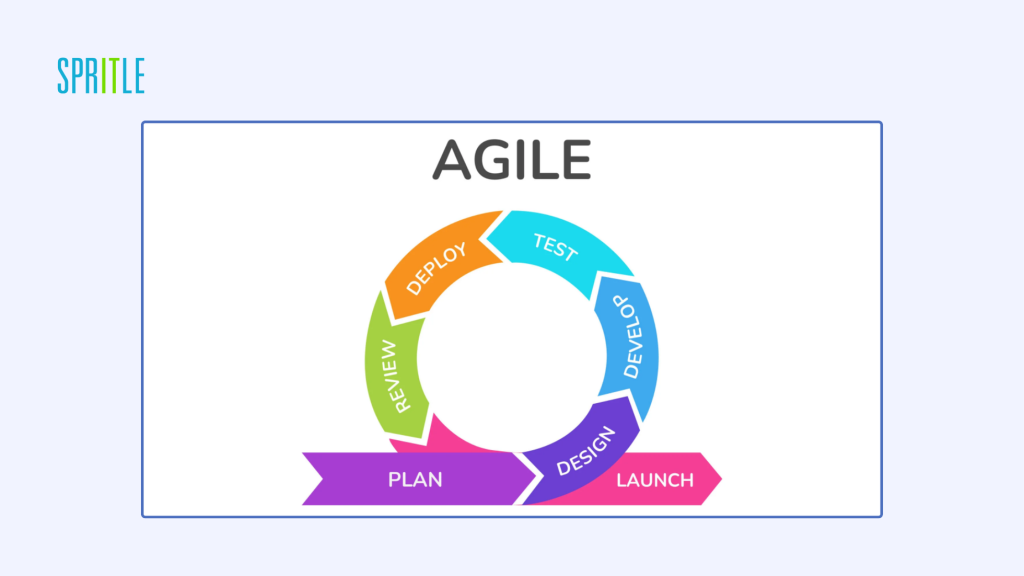
Agile methodology can often seem confusing, especially for developers who aren’t familiar with its real-life application. Many developers view Agile as a set of sprints and ceremonies, but in reality, it’s a practical, flexible approach that simplifies project management and enhances productivity. Let’s break it down into a simple guide, showing how it works in real projects, making Agile accessible and easy to apply.
What is Agile?
Agile is a project management approach that breaks a project into smaller, manageable tasks known as sprints. Unlike traditional Waterfall methods where the entire project is planned upfront, Agile allows continuous adjustments as the project progresses. This flexibility makes Agile ideal for handling changes and unexpected issues that arise during development.
Agile is not just about following a rigid process; it’s about delivering value continuously, responding to change efficiently, and collaborating with the team and stakeholders throughout the project.

Use Case: Building a New Feature for an App
Imagine you’re a developer tasked with building a messaging feature for a mobile app. In traditional Waterfall methods, you would plan the entire feature—design, coding, testing, and deployment—before beginning the actual development. While this might sound organized, what happens when the client changes the requirements halfway through? Or if you find a better solution during development? Adapting to these changes becomes challenging, leading to delays.
Here’s where Agile comes into play, making such scenarios easier to handle.
Step 1: Break the Project into Sprints
Agile advocates for breaking the project into small, achievable goals called user stories. Each user story focuses on a single feature and is tackled in short bursts called sprints. Let’s look at how this applies to the messaging feature:
- Sprint 1: Develop the user interface (UI) for the chat feature.
- Sprint 2: Implement the back-end functionality for sending and receiving messages.
- Sprint 3: Optimize performance and test the feature.
Each sprint lasts about 1-2 weeks, and at the end of each sprint, you deliver a working version of the feature that can be reviewed by the client.
This allows for continuous feedback and adjustments, making the project more adaptable.

Step 2: Continuous Feedback and Flexibility
After each sprint, you gather feedback from the client. If the client decides they want a different chat layout after Sprint 1, no problem—Agile allows you to adjust in Sprint 2.
You don’t have to wait until the entire project is complete to make changes.
This approach contrasts with Waterfall methods, where such changes mid-project would cause major disruptions.
Benefits of Agile in Everyday Project Management
1. Faster Delivery
- Since you’re working in short sprints, you can show results faster. This means the client doesn’t have to wait until the very end to see progress.
- Agile teams can deliver 30-40% faster than teams using traditional project management methods.
2. Flexibility
- Clients often change their minds, and Agile embraces this. You can modify your plans without disrupting the whole project.
- Studies show that Agile teams experience 60-80% higher client satisfaction because they can respond to changes quickly.
3. Improved Collaboration
- Agile increases team productivity by 25-30% due to constant feedback, collaboration, and incremental improvements.
- For example, daily stand-up meetings helped resolve roadblocks in less than 24 hours, saving an average of 3-4 days of work that would have otherwise been lost in traditional models.
4. Risk Reduction
- By breaking work into small sprints, Agile reduces the risk of failure by 50%. Since issues are caught and fixed early, there are fewer last-minute problems.
- In my experience, Agile cut down major rework by 40% because bugs and design flaws were identified during the early stages of development.
5. Quality Improvements
- Continuous testing is a major part of Agile. By testing the product after every sprint, bugs are found and fixed early.
- Continuous testing and improvement in Agile lead to 50% fewer defects in the final product.
Key Agile Practices Developers Should Know
1. User Stories
- These are simple descriptions of what a user needs, written from their perspective. For example, “As a user, I want to send messages quickly so I can communicate in real time.” These help focus on the user’s needs rather than just the technical details.
- user stories reduce the average time spent clarifying requirements by 25% compared to detailed traditional project documentation.
2. Daily Stand-ups
- Stand-ups improve team alignment, leading to a 20% increase in overall efficiency. A quick meeting to check on progress, highlight any issues, and ensure everyone is aligned.
- It’s a great way for developers to raise concerns early.
3. Retrospectives
- At the end of each sprint, the team discusses what went well and what can be improved. This keeps the team improving continuously.
- Teams using retrospectives improve their process with every sprint, increasing their performance by 5-10% after each cycle. I’ve seen teams reduce delivery time by 15-20% after just a few retrospectives.
Final Thoughts
Agile is more than just a buzzword or a set of rules for project managers. It’s a methodology that empowers developers and teams to deliver high-quality work, adapt to changes easily, and communicate more effectively with both clients and team members. By embracing Agile practices like sprints, user stories, daily stand-ups, and retrospectives, developers can improve their workflow, deliver faster, and create better products.
Agile isn’t just for project managers; it’s a tool that empowers developers too! As developers, embracing Agile can help you deliver higher-quality code, adapt to changes easily, and improve communication with the team and clients. In fact, 71% of organizations reported adopting Agile has significantly improved their project success rates.. This simple, practical approach to Agile will help you better manage your tasks and deliver great results in your everyday work.
